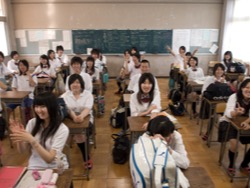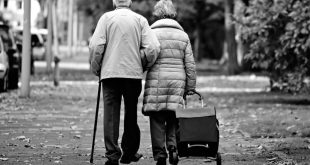
The Japanese have a lot of features: they educate children differently than they do in Europe. Quite possibly, this fact makes Japan such a cool and successful country, to visit the dream of almost everything. The story of their education system interesting and useful for us, from which one would learn a great deal.
First, manners – then knowledge. Japanese students do not pass exams until 4th grade (when they turn 10 years), just write a small independent. It is believed that in the first three years of teaching academic knowledge is not the most important. The emphasis is on education, children are taught to respect other people and animals, generosity, ability to compassion, the search for truth, self-control and careful attitude to nature.
Beginning of the school year falls on 1 April.
When in most countries, children finish school, the Japanese celebrate its 1st of September. The beginning of the year coincides with one of the most beautiful phenomena – the cherry blossoms. So they tune into something sublime and serious mood. The academic year consists of three trimesters: from 1 April to 20 July, from 1 September to 26 December and from 7 January to 25 March. Thus, the Japanese rest 6 weeks during the summer holidays and 2 weeks in winter and spring.
In Japanese schools there are no cleaners, the guys clean the room.
Each class in turn cleans rooms, corridors and even the toilets. So the guys from an early age learn to work together and help each other. Moreover, after students have spent so much time and labor to clean, they would not want to litter. It teaches them respect for their work and the work of others and respectful of the environment.
In schools only prepare standardized meals that children eat in the classroom together with other students
In primary and secondary school for boys preparing a special lunch menu, which develop not only cooks but also medical staff, to the food was the most healthy and useful. All classmates eat together with the teacher in the study. In such an informal setting, they interact more and build a friendly relationship.
The huge popularity of additional education!
In elementary school children begin to attend private and prep schools to get into good middle and then high school. Classes in such areas are held in the evenings and in Japan is very a typical phenomenon when at 21:00 public transport filled with children who rush home after extra lessons. They do even on Sundays and holidays, considering that the average school day lasts 6 to 8 hours. It is not surprising that the statistics show that in Japan there is almost no repetition.
In addition to normal lessons pupils are taught the art of Japanese calligraphy and poetry.
The principle of Japanese calligraphy, or Shodo, very simple: a bamboo brush dipped in ink and smooth strokes paint the hieroglyphs on rice paper. In Japan, Shodo valued not lower than a typical painting. A haiku is a national form of poetry, which succinctly presents the nature and the person as a whole. Both items reflect one of the principles of Eastern aesthetics – the ratio is simple and graceful. Classes teach children to appreciate and respect their culture, with its age-old traditions.
All students must wear a uniform.
Since high school, each student is required to wear a uniform. Many schools have their own form, but traditionally, boys wear military style and girls – sailor. The rule is intended to discipline the students because the clothing itself creates morale. Also have the same uniform helps unite classmates.
The percentage attendance at school is 99.99%
It is difficult to imagine and one person who never in life do not skip classes at school, and then the whole nation. Also, Japanese students almost never late to class. And 91% of students always listening to the teacher. What other country can boast of such statistics?
Here we have something to learn from for their children and improve public relations!








